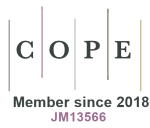Most read articles by the same author(s)
- Marco Quaglia, Guido Merlotti, Cristina Izzo, Piero Stratta, Type iv renal tubular acidosis: an emerging type of nephropathy , Giornale di Clinica Nefrologica e Dialisi: Vol. 26 No. 4 (2014): October-December 2014
- Marco Quaglia, Claudio Musetti, Piero Stratta, The role of rituximab in the therapy of secondary glomerulonephritis , Giornale di Clinica Nefrologica e Dialisi: Vol. 27 No. 3 (2015): July-September 2015
- Marco Quaglia, Guido Merlotti, Vincenzo Cantaluppi, Renal tubular acidosis , Giornale di Clinica Nefrologica e Dialisi: Vol. 28 No. 3 (2016): July-September 2016










